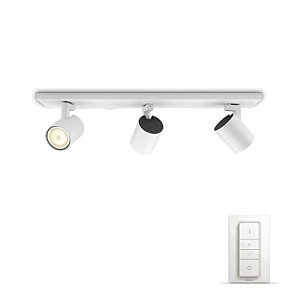5 Cliches About Industrial Lamps UK You Should Stay Clear Of
Industrial Lamps in the UK: Illuminating Industries and Workspaces
In a period where efficient lighting services play a critical role in improving efficiency and security in different industrial settings, industrial lamps have actually become important tools for factories, warehouses, workshops, and more. The UK's market for industrial lighting is rapidly developing, driven by advancements in innovation, a growing concentrate on energy efficiency, and strict safety guidelines. This post checks out the various types of industrial lamps offered in the UK, their applications, and the considerations that need to be made when picking the proper lighting services for industrial environments.
Comprehending Industrial Lamps
Industrial lamps are developed particularly for use in a range of industrial settings. They provide the required illumination while likewise thinking about the distinct difficulties positioned by such environments, consisting of dust, wetness, high ceilings, and variable temperature levels. Industrial lamps can be found in different kinds, including LED, fluorescent, and metal halide lighting, each with its own set of qualities and advantages.
Types of Industrial Lamps
LED Industrial Lamps:
- Description: LED (Light Emitting Diode) industrial lamps are energy-efficient, lasting, and provide excellent lighting.
- Advantages:
- Energy efficiency (as much as 80% less energy intake)
- Long lifespan (approximately 50,000 hours)
- Low heat emission
- Instant brightness with no flickering
- Applications: Factories, storage facilities, and building websites.
Fluorescent Industrial Lamps:
- Description: These lamps discharge light through the excitation of gas, commonly used in environments needing consistent lighting.
- Advantages:
- Good color rendering
- Cost-efficient
- Various sizes and shapes
- Applications: Workshops, garages, and assembly lines.
Metal Halide Industrial Lamps:
- Description: This type of gas discharge lamp produces a bright, white light and is typically used in large areas.
- Benefits:
- High intensity and brightness
- Outstanding for sports venues, parking area, and large industrial facilities
- Applications: Warehouses, loading docks, and outdoor areas.
Comparison Table of Different Types of Industrial Lamps
Lamp Type
Energy Efficiency
Life-span
Brightness
Application Areas
LED Industrial Lamps
Approximately 80%
Up to 50,000 hours
Extremely High
Factories, Construction Sites
Fluorescent
Moderate
7,000 – 15,000 hours
Moderate to High
Workshops, Garages
Metal Halide
Moderate
15,000-20,000 hours
High
Warehouses, Outdoor Areas
Selecting Industrial Lamps
When picking industrial lamps, numerous factors ought to be taken into factor to consider. These include:
Type of Application: Different locations have varying lighting needs. For example, high-precision tasks may need brighter, more focused lighting compared to basic work space lighting.
Energy Efficiency: With increasing energy expenses and ecological concerns, choosing lamps with high energy performance can lead to significant expense savings over time.
Life-span: Longer-lasting lamps decrease upkeep expenses and downtime, making them more effective in hectic industrial settings.
Security Standards: Compliance with security regulations is vital. Industrial lamps must be developed to withstand severe conditions, including wetness, dust, and impacts.
Cost: While upfront expenses matter, the long-lasting savings attained through energy-efficient and long-lasting lamps must likewise be taken into consideration.
Advantages of Appropriate Industrial Lighting
Boosted Safety: Proper illumination minimizes the danger of accidents and injuries in industrial environments.
Increased Productivity: Adequate lighting promotes much better visibility, helping in the efficiency of employees.
Cost Savings: Energy-efficient lamps lead to lower electrical power bills and less frequent replacements.
Improved Quality Control: Good lighting enables much better inspection processes, eventually boosting product quality.
Often Asked Questions (FAQs)
Q1. How do I figure out the ideal type of industrial lamp for my center?A1. Evaluate the specific lighting needs and conditions of your center. Consider Buy Industrial Lighting UK as the jobs being performed, the size of the area, and any regulative requirements.
Q2. Are LED lights worth the investment in an industrial setting?A2. Yes, LED lights offer significant long-lasting savings due to lower energy intake and longer life expectancies, making them an affordable alternative in the long run.
Q3. Can I install industrial lamps myself?A3. While some people may have the skills to install lamps, it is often suggested to hire a qualified electrician to guarantee compliance with security standards and local regulations.
Q4. What upkeep is needed for industrial lamps?A4. Routine evaluations for damage, cleansing of lighting fixtures, and prompt replacement of faulty lamps are important to keep ideal performance.
Q5. What are the current trends in industrial lighting innovation?A5. Advances in smart lighting systems, consisting of IoT (Internet of Things) integration and advanced energy management services, are at the leading edge of industrial lighting innovation.
The ideal industrial lamps are vital to ensuring security, performance, and expense performance in numerous industrial settings. The UK market uses a variety of lighting options, from LED lamps to fluorescent and metal halide options, each ideal for various applications. By understanding the functions and advantages of these lighting types and taking essential considerations into account, organizations can make informed choices that will brighten their workspaces effectively while optimizing efficiency and saving expenses. Buying the best industrial lighting not only improves overall atmosphere but also fosters a much safer and more productive work environment.
